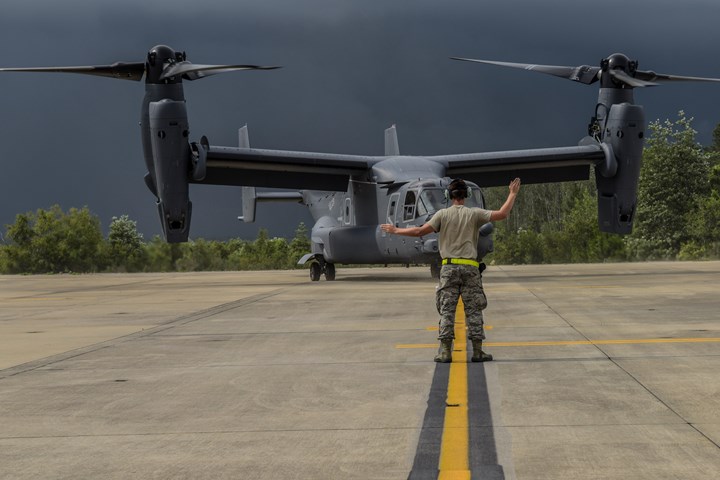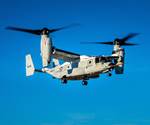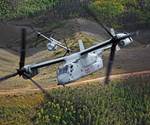Bell Boeing delivers 400th V-22 Osprey tiltrotor aircraft
The composites-intensive plane, since it entered service in 2007, has logged more than 500,000 flight hours.

The Bell Boeing V-22 Osprey program marks a production milestone with a CV-22 delivery to U.S. Air Force Special Operations Command. Source | U.S. Air Force
Reported on June 10, (Chicago, Ill., U.S.) and . (Forth Worth, Texas, U.S.) — comprising the Bell Boeing V-22 team — recently delivered its 400th V-22 Osprey tiltrotor aircraft, a CV-22 for U.S. Air Force Special Operations Command. Beginning with its first production V-22 delivered on May 24, 1999, distribution now occurs under the multi-year procurement (MYP) III contract valued at $5 billion, which runs through 2024 and includes variants for the U.S. Marines, U.S. Air Force, and U.S. Navy, as well as the first international customer, Japan.
The composites-intensive V-22 takes off, hovers and lands like a helicopter, yet flies long distances like a turboprop aircraft. The CV-22 variant performs special operations missions that conventional aircraft can’t, including infiltration, extraction and resupply. The U.S. Marine Corps variant, the MV-22B, provides safe transportation of personnel, supplies and equipment for combat assault, assault support and fleet logistics. The U.S. Navy variant, the CMV-22B, is the replacement for the C-2A Greyhound for the carrier onboard delivery mission.
“I want to thank everyone who has made the V-22 successful,” says Shane Openshaw, vice president of Tiltrotor Programs and deputy director of the Bell Boeing team. “We’re focused on building and supporting these aircraft so our customers can complete their air, land and sea missions worldwide.”
The V-22 has been deployed in a variety of combat, special operations and humanitarian roles since becoming operational in 2007. Having accumulated more than 500,000 flight hours, the V-22 is said to be safe, survivable and combat-proven. Bell Boeing’s post-delivery support includes maintenance, modifications, supply chain expertise, data analysis and more than 160 field operations employees embedded at customer locations.
Related Content
-
What you might have missed at Paris Air Show 2025
A surge in defense spending, partnerships in hydrogen propulsion and new combat aircraft agreements, many backed by composites industry leaders, culminated the 55th Paris Air Show.
-
Ceramic matrix composites: Faster, cheaper, higher temperature
New players proliferate, increasing CMC materials and manufacturing capacity, novel processes and automation to meet demand for higher part volumes and performance.
-
Carbeon C/C-SiC ceramic matrix composites without fiber coating
Dutch startup Arceon is working with leaders in space, hypersonics and industry to test its Carbeon CMC, validating near-net-shape parts with <3% porosity and performance at 1600ºC, targeting UHTCMC and a presence in the U.S. in 2025.



